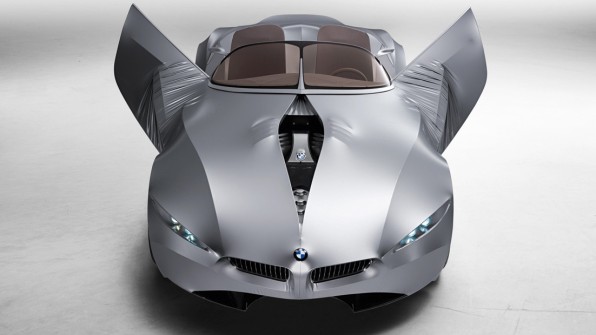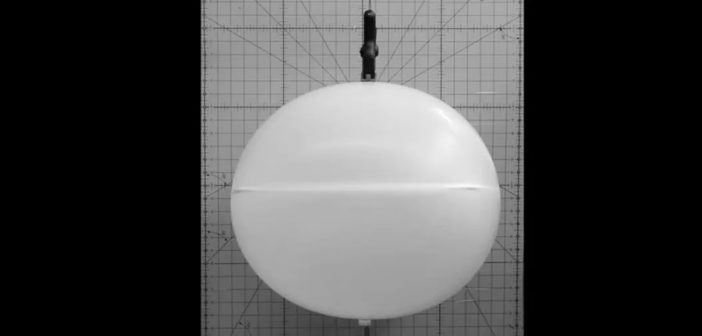Imagine being able to change your car’s interior at the press of a button. Thanks to MIT’s Self-Assembly Lab, it’s not as far-fetched as it sounds.
“Air is pretty cheap,” says Skylar Tibbits, the co-director and founder of the Self-Assembly Lab at MIT’s International Design Center. He’s making a point about inflatables, which could be useful for designers of everything from packaging to shoes. Now, Tibbits and his team at his pioneering material design group are working in partnership with BMW to bring it to car design.
Air is already a useful element of existing cars, including airbags and some cars’ seating, because “it doesn’t take motors or clunky expensive things” to move it around, Tibbits points out. But there are limits to how complex you can make inflatable objects, like balloons, because the super thin, stretchy material is so difficult to work with. It’s a problem Tibbits is well equipped to tackle. At the Self-Assembly Lab, they have developed several radical material and manufacturing innovations–like the idea of 4-D printing, which essentially means 3-D printing objects that are designed to adapt, morph, and even assemble themselves after they’ve been printed, usually in response to environmental triggers like water, temperature, and air. In the past, the Self-Assembly Lab has created sneakers that lace themselves up (just like in Back to the Future), tables that build themselves, and cell phones that snap together.
Working in collaboration with two designers from BMW’s Department, Tibbits and his team are now developing a new way to create complex–and controllable–inflatable objects that could one day make their way into car design. The fabrication process is called “Liquid Printed Pneumatics,” and it builds on a fabrication process the lab invented last year in collaboration with Steelcase called “rapid liquid printing.” In essence, the printer squirts liquified materials like rubber, foam, or plastic into a vat of gel, where the shape sits until it hardens. Because the gel holds the liquid material upright and gravity can’t splash it onto the floor, the technique enables manufacturers to create much larger objects in a wider variety of materials than normal 3-D printers.
Typical printers usually work in hard plastics, but for the collaboration with BMW, the Self-Assembly Lab was able to perfect the use of super-stretchy, 100% silicone rubber, printing it into complex, inflatable forms that can morph and move on their own. By printing clusters of air chambers that can be programmed to inflate and deflate at certain times, they can create particular kinds of movement. “It’s programming it with air,” Tibbits says. “Instead of zeros and ones, you’re sending different pulses of air.”
A demo of the material that’s currently on display at London’s V&A Museum sometimes looks like it’s doing the wave; at other points, it looks like it’s breathing, with part of the complex structure inflating while the rest lies dormant. Other examples show a single inflatable sphere blowing up to 1,000% of its size before bursting. It’s these capabilities that make the technology a promising starting place for truly feasible inflatable designs for cars that aren’t just airbags–though their technique could probably reinvent those as well.

The project is the first to make BMW’s myriad inflatable car concepts from the last 10 years feasible. One idea from the German carmaker, published in 2016 for the company’s 100th anniversary, uses moving, inflatable surfaces as an analog dashboard inside the car to indicate obstacles on the road ahead. Another, older concept called Gina, has a flexible outer skin that enables the car to morph. These ideas have remained in the realm of fantasy for years because it’s very difficult to manufacture inflatable, self-assembling materials that react and adapt to the world around them, particularly in a mainstream way. Liquid Printed Pneumatics could bring these concepts closer to realization.
With the advent of autonomous vehicles, BMW is thinking about how inflatable material could completely change both the insides of cars. “We have more possibilities to use the interior of the space for different kinds of seating,” says Martina Starke, BMW’s head of brand vision and brand design. “For that we think the interior could be modular. This material brings a lot of opportunities.”

It’s easy to imagine climbing into a car and adjusting the interior to suit your tastes. If you want to catch a nap, perhaps the seats inflate and merge together into a long bench. If you need to take a conference call, the seats could hold you upright while the rest of the interior transforms into a makeshift workspace. And if you’re joined by a friend, perhaps the car’s interiors morph into bucket seats facing each other so you can chat on the way to your destination.“The interior could be different every time you got in, or for every person who got in,” Tibbits says. He also explains how the technique could be used for materials like foams where you’d be able to control the firmness of the material by how inflated it is, just like the way you can adjust air mattresses to your taste, whether in a sneaker or a shipping material. “By using pressure differential inside and out, you can make it morph around a human or object,” he explains.
Starke wouldn’t say how exactly BMW plans to use the Self-Assembly Lab’s work, so it may be a while before you’ll see any printed pneumatics in your car. For now, it’s a glimpse at how integral wild, morphing materials will be to the future of car design.
–
This article first appeared in www.fastcodesign.com
Seeking to build and grow your brand using the force of consumer insight, strategic foresight, creative disruption and technology prowess? Talk to us at +9714 3867728 or mail: info@groupisd.com or visit www.groupisd.com



